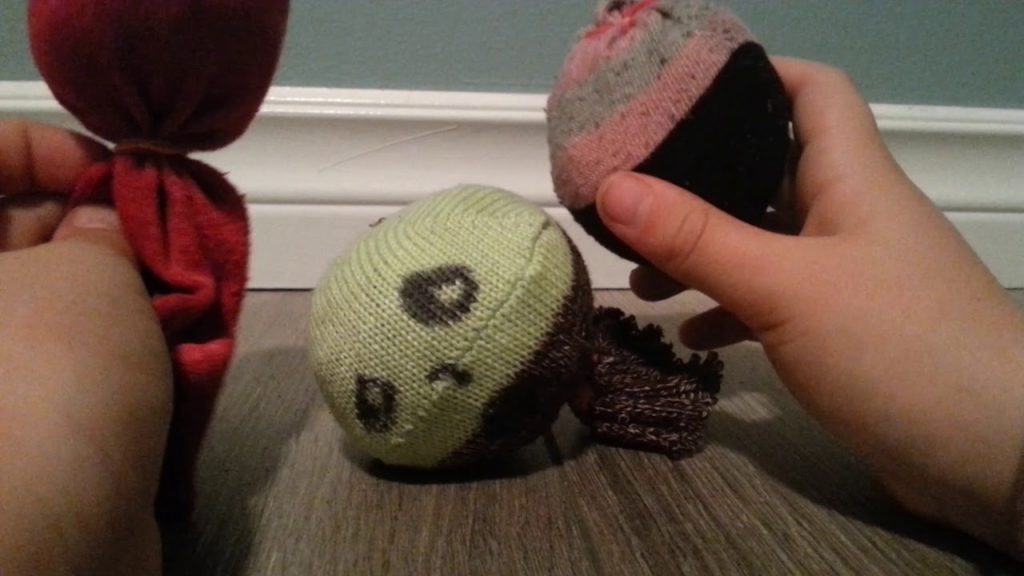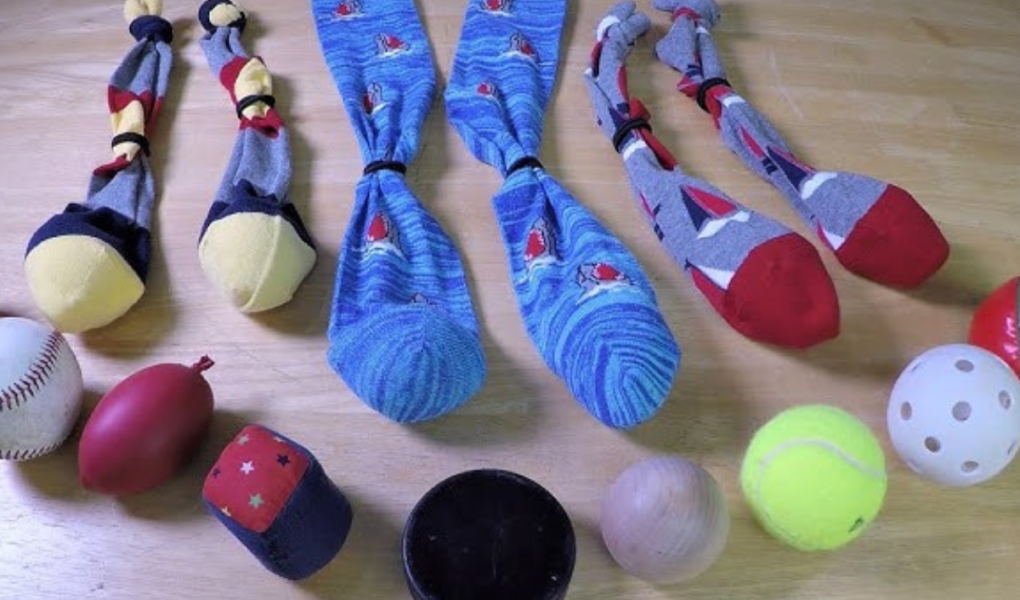Stress balls are handy tools that can help you relax and alleviate tension by squeezing and releasing them. You can easily craft your stress ball if you need a stress-relief tool and have some old socks lying around.
What is a Stress Ball?

A stress ball is a small, pliable object that can fit in the palm of your hand. It’s designed to be squeezed and released repeatedly to help reduce stress and tension. Often used in physical therapy, stress balls can also strengthen hand muscles. They are available in various shapes and sizes and can be made from foam, rubber, or fabric.
Do Sock Stress Balls Work?
Sock stress balls function much like traditional stress balls. Squeezing and releasing engages your muscles and provides a physical outlet for stress. The resistance provided by the sock filled with your chosen material can be pretty soothing. While it may seem unconventional, a sock stress ball can be an effective and personalized stress-relief tool.
Follow these simple steps to make a homemade stress ball with socks:
Does the Material and the Size of the Sock Matter?

Yes, the filling material and the sock’s size play essential roles in crafting a sock stress ball that meets your needs.
Choose Your Material
Selecting the right material for your sock stress ball is crucial to get the desired texture and resistance. Here’s a guide to common filling options and what they contribute:
- Rice: Rice is an excellent option for a moderate level of resistance. It gives the stress ball a pleasant texture that’s neither soft nor hard. It’s readily available and a popular choice.
- Flour: Flour is a good option if you prefer a softer stress ball. It makes the stress ball more pliable and is perfect if you want something gentle to squeeze.
- Small Beads: For a firmer texture, small plastic beads are a great choice. They provide a more solid feel and can be therapeutic for those who prefer something harder to squeeze.
- Lentils: Lentils offer a unique texture different from rice but still provide good resistance. They can make the stress ball feel more natural and earthy, suitable for those who want a tactile experience.
- Sand: Fine sand is an option if you’re looking for a smooth and moldable texture. It makes the stress ball easily shapeable and provides a calming sensory experience.
Size of the Sock
The size of the sock also has a significant impact on the final product. A smaller sock will produce a more compact stress ball, suitable for smaller hands or more intense squeezing. A larger sock, on the other hand, can create a more substantial stress ball, providing a different experience and potentially spreading the pressure more evenly across the hand.
Both aspects should be carefully considered to craft a sock stress ball that is comfortable to use, effective in relieving stress, and tailored to individual preferences. By taking the time to choose the right materials and sock size, you can create a personalized tool that meets your specific needs for relaxation and stress relief.
Instructions

Step 1: Choose Your Sock
Select a sock that’s soft yet sturdy. Thicker socks often work well as they provide a good amount of resistance and durability.
Step 2: Fill the Sock
Hold the sock open and carefully pour in your chosen filling material. You might find rice or flour suitable, as they provide the right texture. If you want something firmer, tiny beads will do the trick. Fill the sock until it reaches a comfortable size in your hand.
Step 3: Secure the Opening
Twist the open end of the sock to close it tightly. Wrap a rubber band or strong thread around the twisted part several times to keep it closed. If you’re using a thread, tie a firm knot.
Step 4: Cut Off the Excess
If too much extra material is at the top, you can trim it off using scissors. Be careful not to cut too close to the rubber band or knot, or it may unravel.
Step 5: Double Up for Extra Strength
For a more resilient stress ball, take the second sock and place the filled sock inside it. Repeat steps 3 and 4 to close and secure the second sock.
Step 6: Personalize Your Stress Ball
You can personalize your stress ball by adding some decorative touches. Consider drawing or stitching on a smiley face or other fun designs. Be creative!
Frequently Asked Questions
Washing a sock stress ball depends on the filling material. If it’s filled with something like rice or beans, it’s best to avoid washing. If necessary, you can spot-clean the surface with a damp cloth.
Generally, sock stress balls are safe for older children, but supervision is advised, mainly if small, ingestible materials are used as fillings. Consider using a sturdy fabric and secure stitching for younger children to prevent choking hazards.
You can customize your sock stress ball by using colorful or patterned socks, adding embroidery, or even attaching decorative elements. Ensure all added decorations are securely attached to prevent them from becoming detached with use.
To make a stress ball without a balloon, you can use a piece of cloth like an old T-shirt or cloth scraps. Place your chosen filling material (such as rice, flour, or tiny beads) in the center of the cloth, gather the edges, and then securely tie it off with a strong thread or yarn. Trim any excess fabric, and you have a simple, homemade stress ball.



